Psychedelic carpets and trends in German wine: Tasting Germany's finest at Bayerischer Hof, Munich
A few years ago, when the Wine Ramblers were not yet Wine Ramblers, we attended our first ever wine tasting together. An unhealthy mix of curiosity and the promise of a free tipple had brought us to downtown Munich's venerable Bayerischer Hof. At this hotel, members of the VDP (Verband Deutscher Prädikats- und Qualitätsweingüter), an association of some of Germany's most distinguished wineries, were presenting a range of their wines. It was a memorable evening that began with a lot of awkward swooshing and spitting, and ended with a drunken plan of creating a diversion in order to steal a case of Knipser Syrah that, sadly, never came to fruition. But that is a story for some other year.
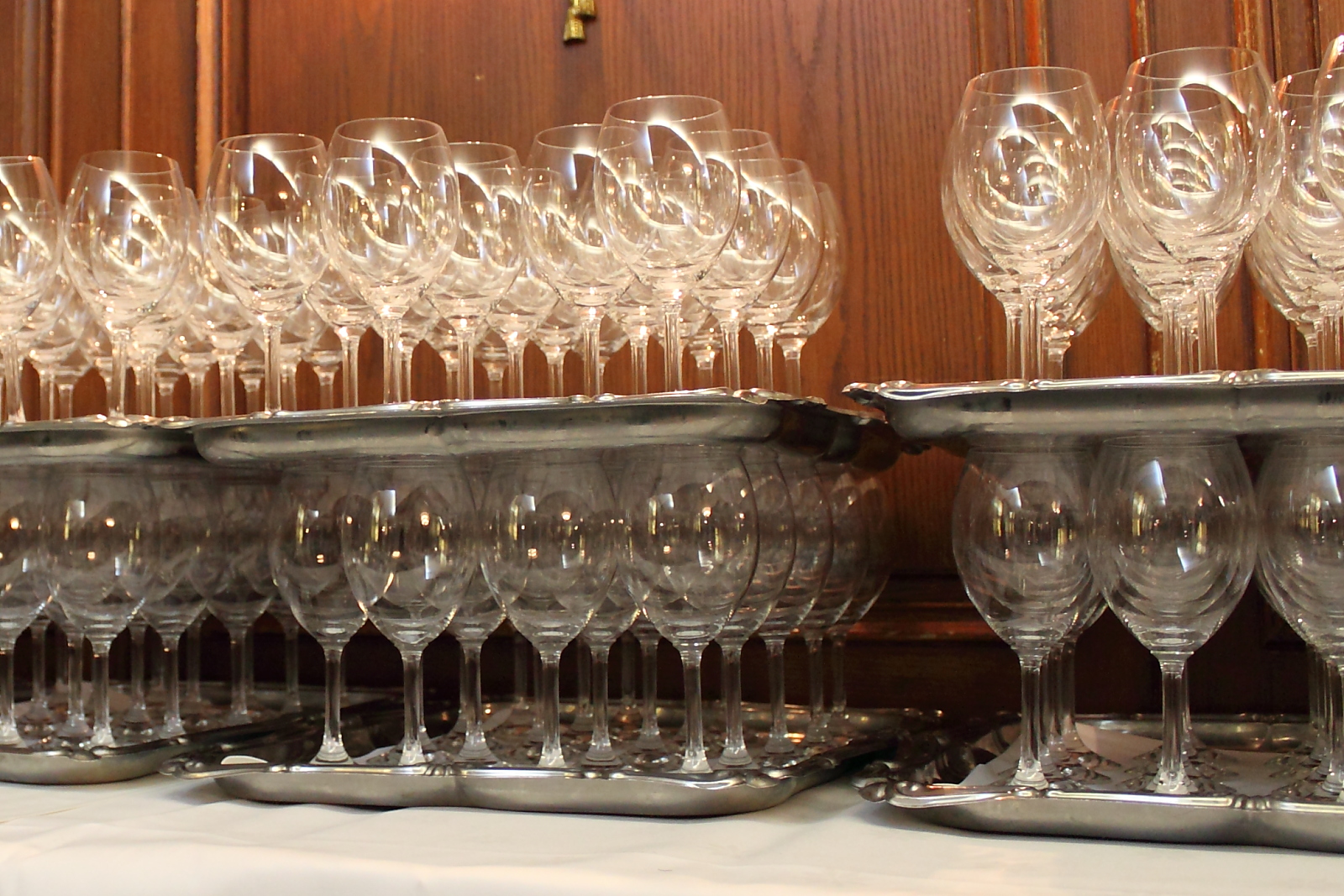
The tasting is an annual event, we reported on it last year and we will in the future. This year, we decided to cover in more depth the six wineries that most convinced us - and to point out a few wider trends that we think may be worth noting and discussing.
The location
But first, a word on the scene of the crime, the historical conference room of Munich's poshest, five-starred hotel. The oak cabinets, complete with fake bookcases, the chandeliers and carpets must at one time have been the height of luxury and elegance, even if it's not quite clear when that time was. The oak panelling seems to swallow light as well as time, bathing the room in a sort of perpetual 1950s gloom. Judging from the tasters usually assembled there, it may be a kind of reverse fountain of youth as well, with the average age considerably above that of your Wine Rambler investigative team. Needless to say, we moved in fearlessly to bring back some stories for you.
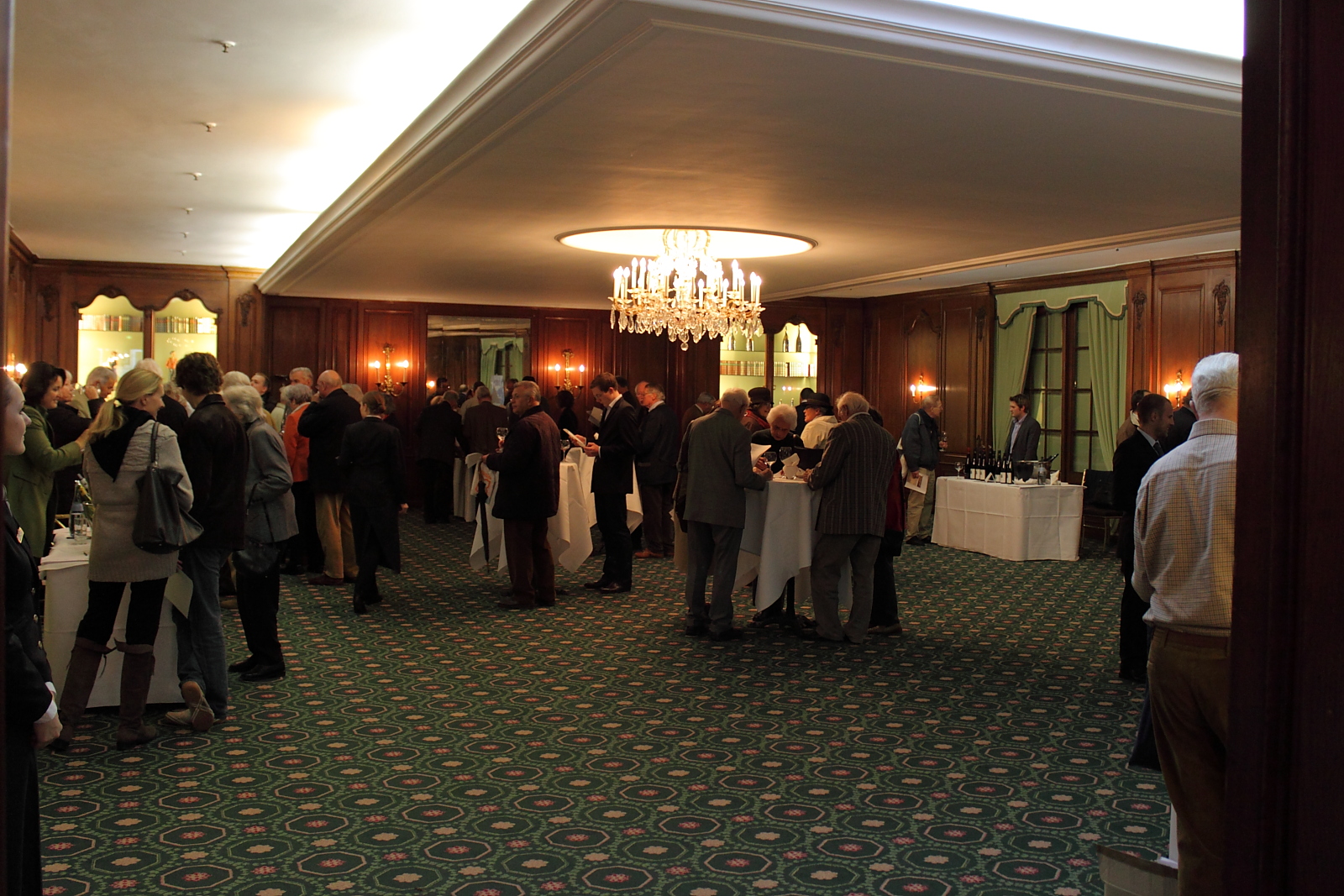
What's with German wine? Some issues and trends
A place with this kind of interior design and age structure may not seem the ideal place to conduct a sociological survey of the wider German wine landscape. But before we get into the more detailed wine-by-wine reporting, we would like to point out three significant if debatable trends that the tasting once again brought home to us:
Firstly, red wine is unstoppably on the rise in Germany. High-end reds are becoming accepted as a category of wine in which Germany can compete.
Secondly, we did try a few delightful sweet whites, but they were marginal in the context of what was offered. Within Germany, the great growth dry Rieslings are now seen as the benchmark achievement of any winery, more so than the show-stopping Prädikat dessert wines. What is the bedrock of German wine fame in international perception is something of a niche in the eyes of domestic consumers: the Mosel estates specialising in residually sweet Rieslings are, geographically and stylistically, still somewhat on the edge, as strange as this may sound to anglophone ears. Instead, a whole different elite of wineries are consolidating their expertise with flawless and versatile across the board collections, sweet and dry, red and white. Knipser and Salwey we'll report on in just a minute, Keller and Wittmann from Rheinhessen would be two more names that come to mind.
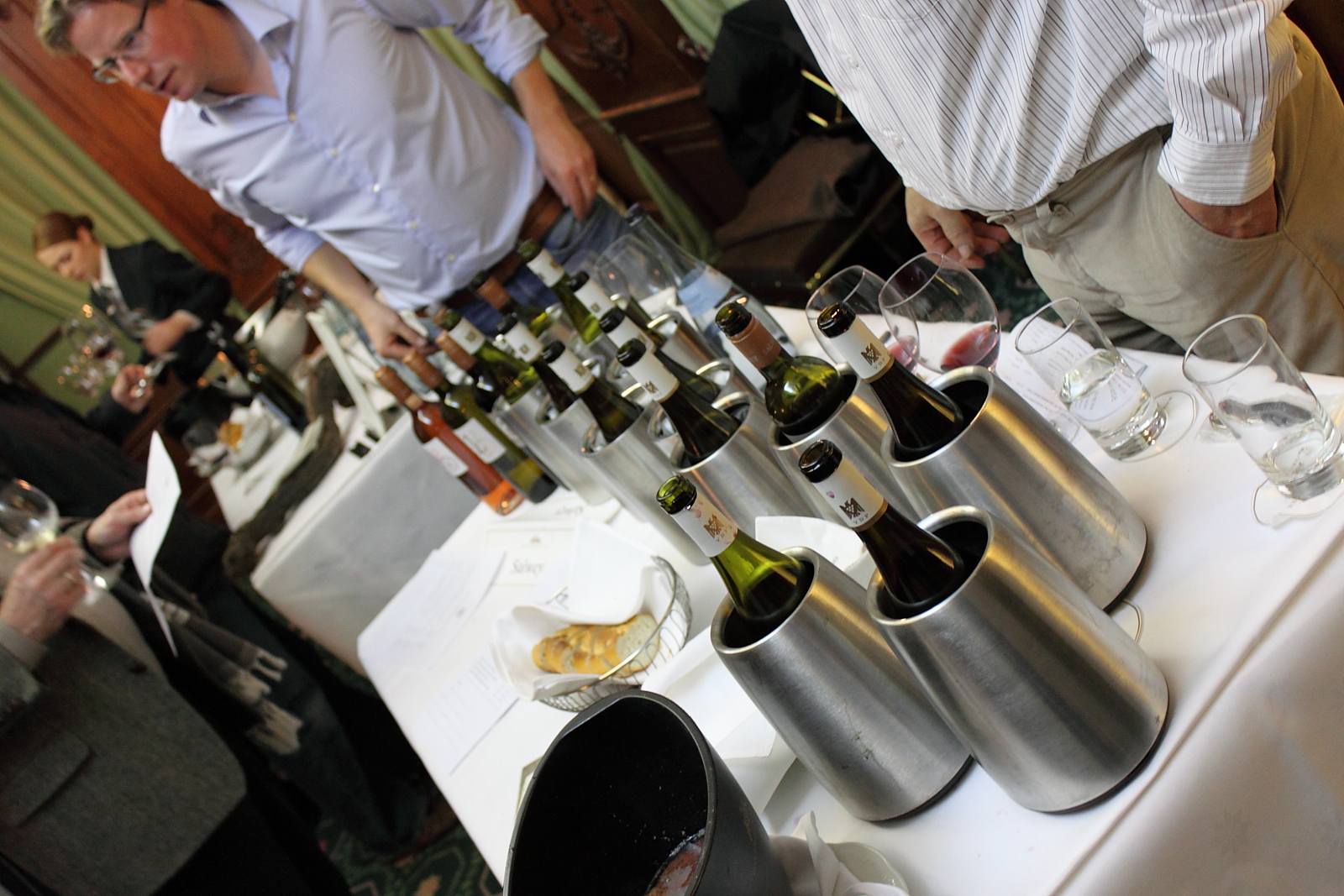
Thirdly, studying the winery leaflets, we were amused to see "brands" coming up against traditional vineyard naming. We have seen clever and imaginative branding, for example by Salwey (cuvées named by the suggested serving temperature) and from Heger ("Fidelius" deftly combining pop-cultural appeal with highbrow latinate internationalism, reaching far beyond the wine-loving Harry-Potter crowd). But is there a rule that you can "brand" only your entry-level wines? It would seem so, because so far, everyone is staying with good old German vineyard names for end-of-the line. I guess that the point is this: If you are into wine, most likely you are in it for the variety and a sense of time (vintage) and place (vineyard) that go into a product that is wilfully inconsistent and unreliable. If, on the other hand, a winery can deliver on the implicit promise of a "brand" to produce a wine of dependable and essentially unchanging quality, there is something to be said for that, too. Our ideal in this regard is Salweys mid-range "RS" line, from single vineyards, but still not marketed as such: You know what you are getting before even tasting the wines as they are reliably outstanding. In other words, you no longer relate the character you can taste to the particulars of any vineyard, but to the competence of the producer. Now that is what we call a brand that works.
the accomplished
In fact, let's start right there, with the Salwey estate form Baden's Kaiserstuhl sub-region: We began with the Rosé '9°' (€7,40) and the white cuvée '11°' (€7,40), both with unexpected substance and loads of character. The mid-range "RS" (Reserve Salwey) added a layer of class to that with creamy, nutty, but still mouthwatering whites (Weißburgunder RS and Grauburgunder RS at €13,80) and a complex and autumnal Pinot Noir (€19).
The Salwey people have understood, it seems, that you can't just keep shovelling more concentration, fruit and alcohol onto your wines as you move up through the range of quality. That is why (in many cases) the maximum concentration is reached mid-range, and from there on, they fine-tune with more complex layers of fruit here, a dab of polish there, or a tannic backbone that is that little bit firmer. This goes for most of the grand cru red and white pinots that they presented: Understatement, elegance, and all of them seeming too young to be drunk now. There was one stand-out bomb of a wine: The 2009 Oberrotweiler Eichberg Großes Gewächs Pinot Gris (€24,30) had copper colour, smelled of a skillet of fried bacon and buttery pancakes and simply overwhelmed us with its richness and concentration. A stunner.
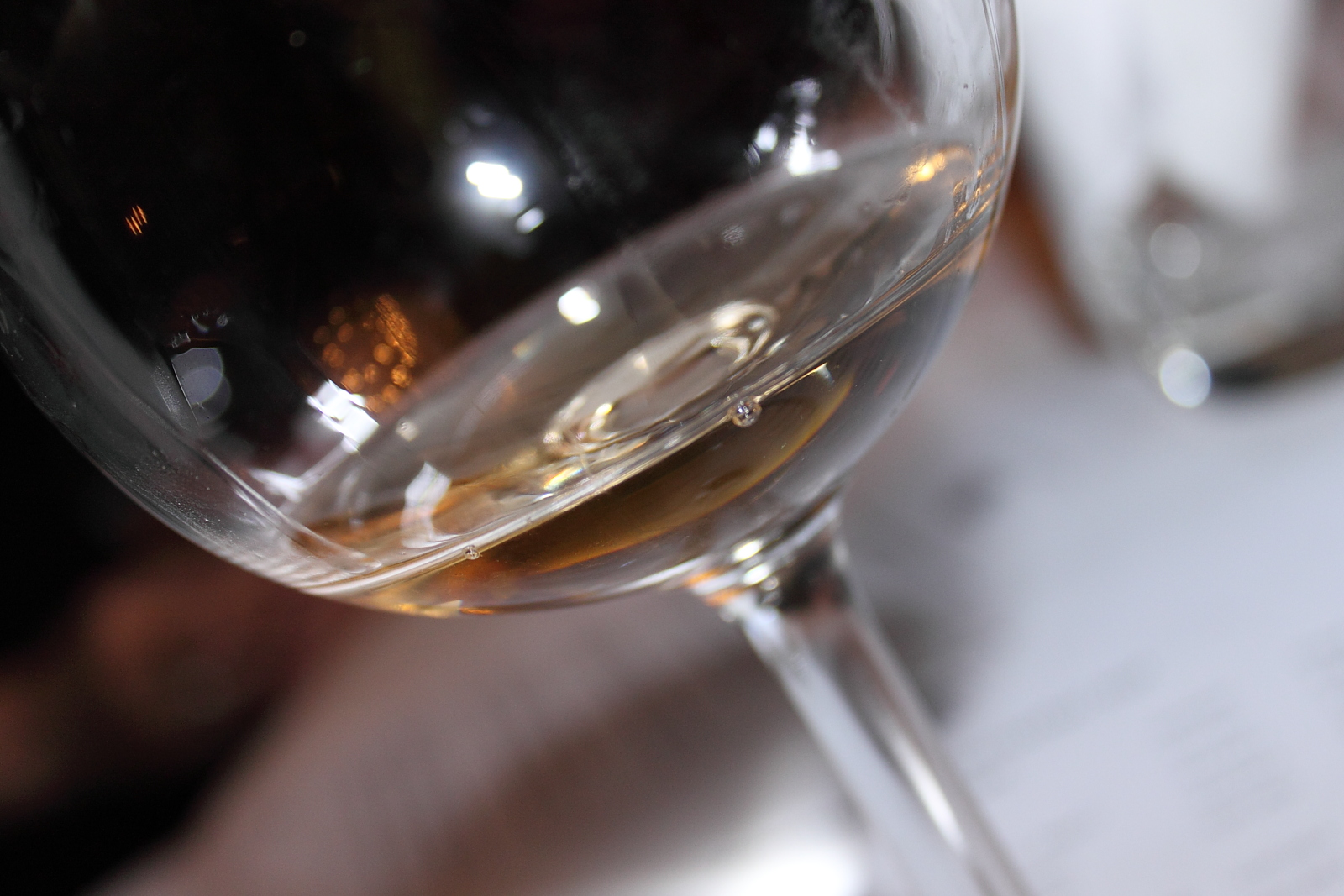
The Knipser estate really needs no introduction here, so let's do what we did that evening, head straight for the bottles: They first hit us with three flawless Rieslings defined by beautiful quicksilvery acidity: the 09 Laumersheimer Kapellenberg Kabinett trocken (€7,80), the 09 dry Spätlese "Kalkmergel" (€12,80), and, most memorably, the 08 Mandelpfad Großes Gewächs (€19,00) - one of the wines of the evening by everybody's standard: Ripe and fresh at the same time, with the timeless taste of peaches sprinkled with fresh petrol and a commendable alcohol content of only 12.5%.
The reds were in admirable shape as well, from the entry-level Cuvée Gaudenz (€8,20) to the sublime and perfectly aged 04 Großkarlbacher Burgweg Spätburgunder Spätlese trocken (€23), the Pinot of the evening for us. The 06 Cuvée X (€32), the Knipsers' Bordeaux-style red, was impressive as always, with polished dark fruit and dark chocolate, but I'll admit that my thoughts also went to the Médocs from the 1990s that I can get on eBay for that kind of price.
While the general level of quality hasn't surprised us - we have come to expect no less - the tautness and low alcohol of the great growth Riesling seems to indicate a surprising stylistic turn. In the past, I sometimes found Knipser whites a little too soft and round - no more. With their experience and prestige, they could easily have kept going with what they had, but it seems Knipsers are leaving their comfort zone and moving into the cutting edge. You have to respect and admire that, but more importantly, you really, really, need to try their wines.

the runners-up
Swabia occupies a special place in our heart, but in the past it has frankly let us down on this occasion. This year Aldinger, the Fellbach-based winery, made it up to us, first with a 09 Fellbacher Lämmler Riesling GG (€25,30): Yummy all around, with great depth and substance, a good deal softer and less insistent, and therefore not as completely gripping as the competing contestant from Knipser, but no doubt top-notch. Ambitiously priced, though.
The three-starred Untertürkheimer Gips Weißburgunder trocken (€21,70) showed the robust use of new oak that we had been critically of in earlier tastings, but either our palates have evolved or more work has been done on integrating the oak, because we found it richly oaky and buttery, yes, but again, well rounded and undeniably yummy. We quite liked the Untertürkheimer Gips Spätburgunder Rosé trocken (€16,20), which combined fresh berry flavours with a touch of new oak. Interesting, and not bad at all. To top off the collection, the 09 Riesling Eiswein (€38,80 for the half bottle) was a little aromatic explosion that made us long for a good piece of goat's cheese straight away. Certainly a strong showing overall from Swabia, which surprised us mildly, but very pleasantly, as you can imagine.

Dr. Heger, Salwey's neighbour in the Kaiserstuhl, was one of the few estates who brought a broader selection of entry-level wines as well. We tried both the straightforward, well-structured and sturdy 09 Silvaner (€7,20) as well as the flowery, very fruity and likeable 09 "Fidelius" (€6,70), an original and very value-driven cuvée of Pinot Blanc, Silvaner, Sauvignon Blanc and Muscat. On to top-range whites: Baden Riesling is widely underrated, as the cool herbal depth and freshness of the 09 Ihringer Winklerberg Großes Gewächs (€18,50) showed. Not that they needed to convince us.
The 09 Achkarrer Schloßberg Grauburgunder Großes Gewächs (€23,80), a Pinot Gris, was Heger's show horse for the evening. It demonstrated once again that they know their way around an oak barrel like few in this country: The combination of mineral depth, lively acidity and smoothly applied new oak was a clear winner. Their reds are another story - the 07 Ihringer Winklerberg Spätburgunder 'Mimus' and the Bordeaux-style blend "Novis" from the same vineyard (both €21,90) have stayed in our memory: Stylish and distinctive, certainly, but traditionally made in the much lighter, less concentrated 'German' style of red wine. This makes them very drinkable and food friendly, but in comparison with the deeper, darker reds we tried that night, they just seem to lack a bit of power.

Künstler is another name that hardly needs an introduction. Neither did we, we just stuck out our tasting glasses: We started with a Spätburgunder Weißherbst trocken (€8,50), the traditional German equivalent to rosé - made from "red" grapes but almost white in colour. Essentially this was like a fresh, light white with a little more aromatic spice and traces of red berries. Not exactly a stunner, but these are nifty food wines. The Hochheimer Stielweg Riesling Alte Reben (€16,50) stepped it up a notch - old vines are always good - with juicy, velvety, peachy Riesling goodness. We still didn't stay with it very long, because we couldn't wait for the same great growth Riesling from two different vintages that Künstler had waiting: The 09 Hochheimer Hölle Erstes Gewächs (€27,50) had enormous mineral grip and bite, was well-rounded, but still very young. The 08 version, on the other hand, had added caramel-coated layers of complexity and was staggeringly good - probably the evening's most complete and seductive dry white. The reds did not fail to please, either, but neither the blackberry-scented Spätburgunder Tradition (€12,90) nor the up-scale Hochheimer Reichestal R (€23,80) with its smoky bacon reminiscences seemed to us to have quite the focus of, well, you know who.
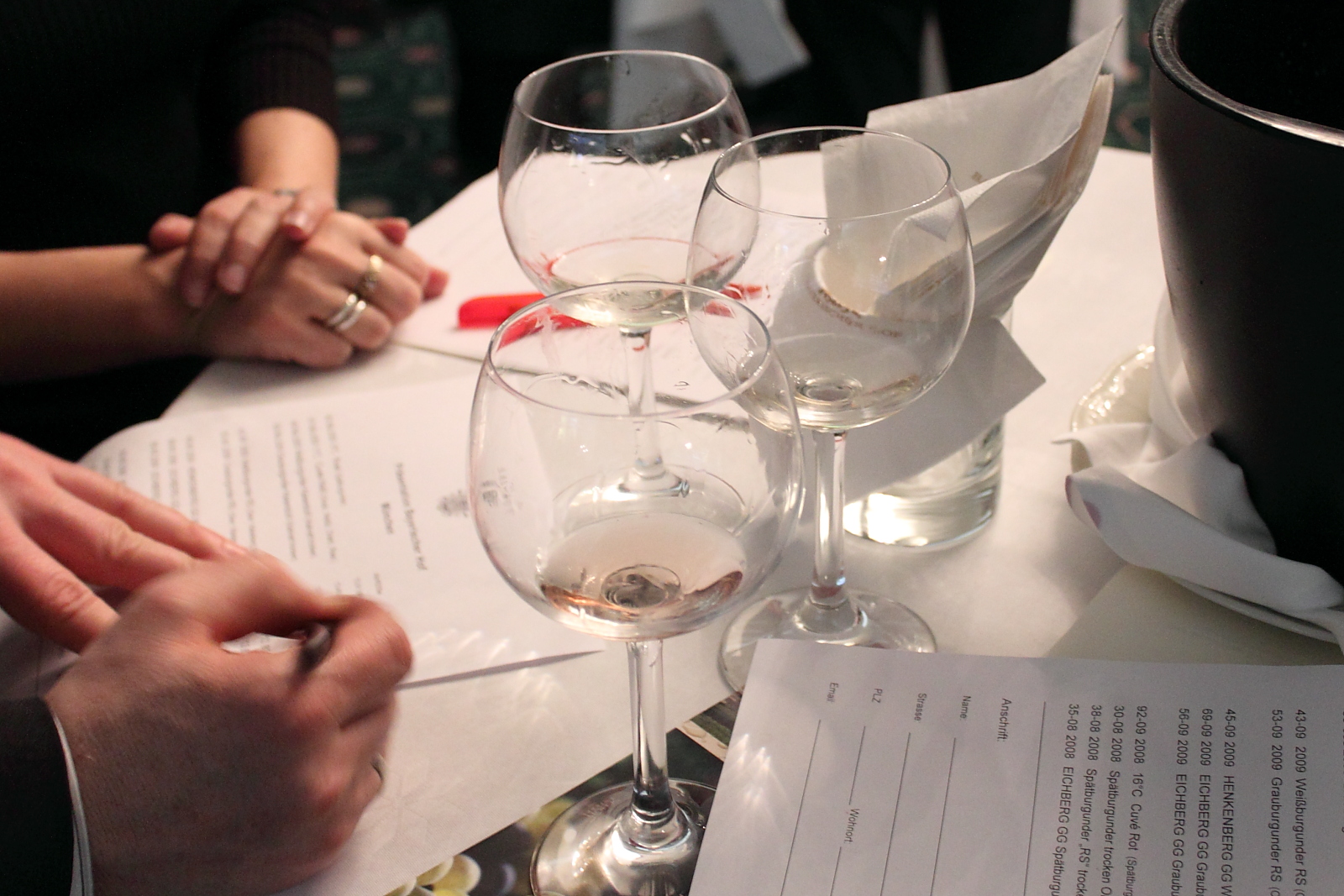
Hans Wirsching, a large and very well known Franconian winery, has had the largest table at the tasting year after year, holding sway. They presented a correspondingly large portfolio that we couldn't appreciate in its entirety. The 09 Iphöfer Kronsberg Müller-Thurgau (€5,50) smelled of sweet spices and tasted softly fruity. A good example of the grape, but also of its limitations. The Silvaner Spätlese trocken from the same vineyard (€9,80) was concentrated, earthy and brought the minerals and ripe apples that a good Silvaner should. Nice. A Riesling Kabinett from Iphöfer Julius-Echter-Berg (€9,80) was very dry and tautly structured, a nice contrast to the more floral and fruity Mosel style, while the great growth Riesling from Iphöfer Kronsberg (€17,50) was built on the same principle - with yet more depth and minerality but still not really shining. More original was the 07 TriTerra (€18,50) a cuvée of barrique-fermented Pinot Gris, Pinot Blanc and Chardonnay: oily, nutty, a little morbid maturity, very long. A wine to sip by the chimney fire.
And then to make plans of breaking into wine vaults, and to doze off to dream of chandeliers and psychedelic carpets.

VdP tasting
While snow falls like crazy here in London (well, what the English consider "crazy" for snowfall that is), I enjoy a little quality time with a peppermint tea. This may be as good an occasion as any to add a few more comments.
First of all, on a personal level I would want to yet again praise the chap who runs the Heger table. He is very friendly and always shares interesting thoughts and comments on wine. And, as Julian rightly said, the people at Heger do know how to use oak barrels for giving white wines that extra kick. Shame they don't deliver to the UK.
Speaking of barrique: we also tasted a few oaked white wines that, well, had seen a little too much of it. It was not as dramatic as last year, so definitely progress, but for our taste at least one winery (you know who you are) just do too much. Oaked Sauvignon Blanc? Well...
Knipser really impressed me. As with previous vintages, I consider the Kalkmergel Spätlese fantastic value. A bombshell of a wine. And the 2004 Burgweg, what a Pinot Noir!
And I was very pleased at how good the Adlinger wines were. Having lived in Fellbach as a child I feel a certain attachment.
Overall lots of really good wine, across the board.